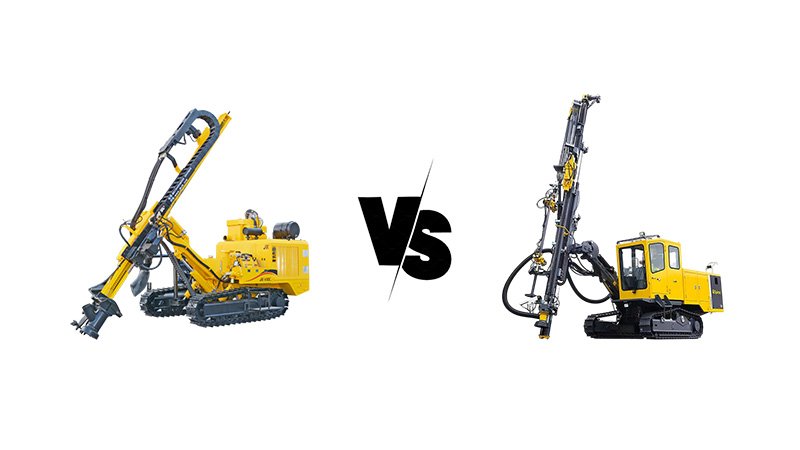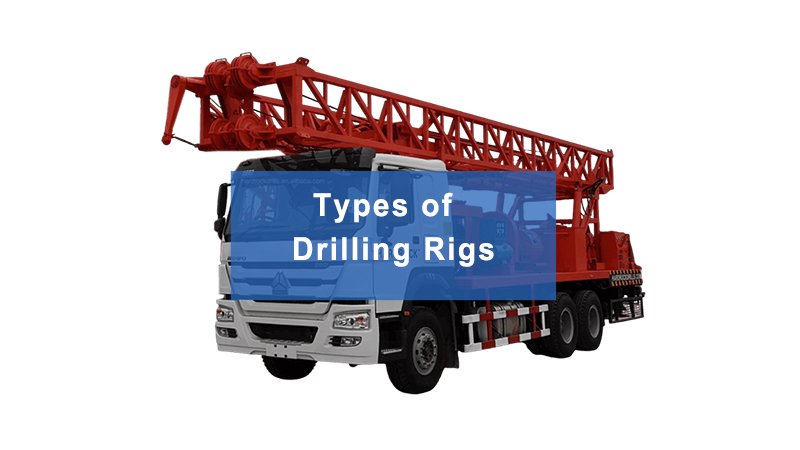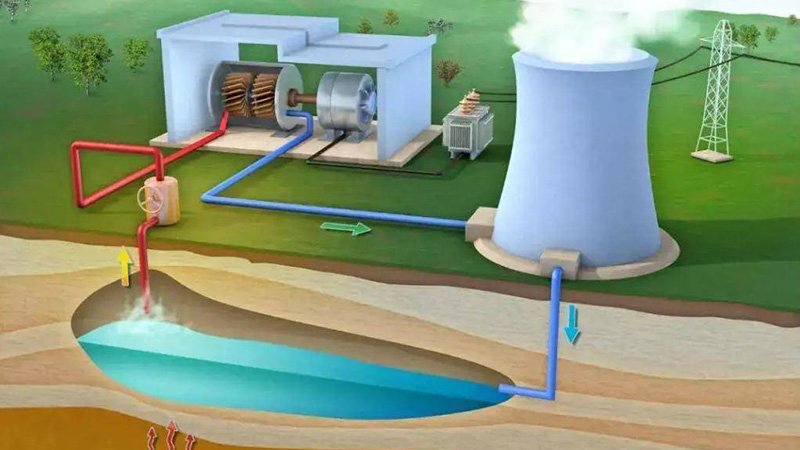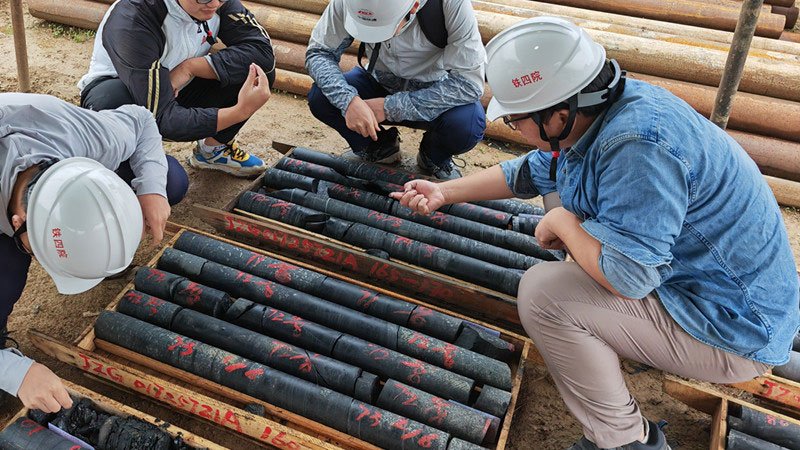Need to know what's beneath the surface? Blind excavation is risky and costly. Core drilling provides precise subsurface samples.
A core drill is used to extract cylindrical samples, or "cores," of rock, soil, concrete, or other materials. This allows detailed analysis of subsurface conditions, material properties, and geological formations for many industries.
You might see core drills on construction sites or in remote exploration areas. They look impressive. But what exactly are they doing? It's more than just making holes. Core drilling is fundamental to understanding the ground we build on and extract resources from. I've seen firsthand at Hardrock how vital these samples are for our clients. My insights from our factory tests show that core drilling isn't just about speed—it’s the foundation of accurate geological analysis and safe construction. The right rig, like the ones we build, truly matters. If you want to know why these machines are so important, let's look closer.
How Does Core Drilling Help in Geotechnical Investigations?
Unstable ground threatening your project? Unknown soil conditions lead to design failures. Core drilling reveals crucial geotechnical data.
In geotechnical investigations, core drilling obtains soil and rock samples. These cores are tested to determine strength, composition, and stratification, essential for designing safe foundations, slopes, and earthworks.
Geotechnical investigations are all about understanding the ground before any construction starts. Imagine trying to build a skyscraper or a bridge without knowing if the ground can support it. That’s where our geotechnical drilling rigs come in. They are designed to extract these core samples. From these cores, engineers can learn so much. They see the different layers of soil and rock, how thick they are, and how they are arranged. They take these samples to a lab and perform tests. These tests measure things like how strong the soil is, how much water it can hold, and how stable it will be. This information is critical. For example, my client Mohammed Al-Rahman in the UAE uses our foundation drilling rigs, and the data from initial core drilling informs how deep and strong the foundations for his projects need to be, especially in challenging desert conditions. It helps engineers design safe and stable foundations for buildings, roads, tunnels, and dams. It also helps them assess the risk of landslides.
Here's a simple table showing what we learn:
| Geotechnical Parameter | How Core Drilling Helps |
|---|---|
| Soil/Rock Stratigraphy | Provides a visual log of layers, their depths, and types |
| Material Strength | Cores are tested for compressive and shear strength |
| Permeability | Samples used for laboratory tests to see how water flows |
| Rock Quality Designation (RQD) | Assesses fracture frequency and overall quality of rock mass |
| Groundwater Levels | Boreholes can reveal the depth of the water table |
Without good core samples, geotechnical designs are just guesswork. That’s why top-quality, customized drilling solutions are so important.
Why is Core Drilling Essential for Mineral Exploration?
Searching for valuable minerals blindly? Exploration without samples is a costly gamble. Core drilling provides direct evidence of deposits.
Core drilling is vital in mineral exploration to retrieve samples from potential ore bodies. These cores are assayed to determine mineral type, grade, and quantity, guiding investment and mine planning.

When a mining company is looking for valuable minerals like gold, copper, or iron ore, they can't just start digging a giant hole. That would be incredibly expensive and inefficient. Instead, they use core drilling. Our mining exploration drilling rigs at Hardrock are built for this exact purpose. They can drill deep into the earth and bring back long cylinders of rock. These cores are like a library of the earth's history at that specific spot. Geologists carefully examine these cores. They look for signs of mineralization, the types of rock, and any geological structures that might host an ore deposit. Then, specific sections of the core are sent to a laboratory for assaying. Assaying tells the company exactly what minerals are present and in what concentration, or grade. This information is crucial. It helps the mining company decide if there's enough valuable mineral to make a mine profitable. It also helps them understand the size and shape of the ore body. This data is then used to create 3D models of the deposit, plan the mine layout, and estimate the total resource. Many of our clients in Africa and Southeast Asia rely on our robust exploration rigs for these tasks, often in very remote and tough environments.
Here’s how core drilling fits into exploration:
| Exploration Stage | Role of Core Drilling |
|---|---|
| Target Identification | Confirms geological models and presence of mineralization |
| Deposit Delineation | Defines the boundaries, depth, and thickness of an ore body |
| Resource Estimation | Provides samples for calculating ore grade and total tonnage |
| Geometallurgical Studies | Cores tested to see how easily minerals can be extracted |
| Mine Feasibility & Design | Provides essential data for planning the entire mining operation |
Core drilling turns exploration from a guess into a calculated investment.
What Role Does Core Drilling Play in Construction and Infrastructure?
Installing utilities or testing structures with uncertainty? Assumptions can be costly. Core drilling creates precise openings and samples.
In construction, core drilling creates clean, precise circular openings in concrete or asphalt for utilities. It's also used to extract concrete cores for strength testing and structural integrity assessment.
Core drilling is not just for finding things underground; it's also very useful in building and maintaining what's on the surface. In construction, you often need to make very precise, clean holes in hard materials like concrete or asphalt. Think about installing new pipes for plumbing, running electrical conduits, or putting in HVAC systems. A core drill can cut a perfect circular hole without damaging the surrounding structure. This is much better than just smashing a hole with a hammer drill. Our clients who are engineering contractors or construction companies find this precision invaluable. Another important use is for testing existing structures. For example, if there's a question about the strength or condition of an old concrete bridge or building, a core drill can extract a sample of that concrete. This core is then taken to a lab and tested for its compressive strength and other properties. This helps engineers decide if the structure is still safe or if it needs repairs. The same applies to roads and airport runways. Core samples can tell engineers about the thickness and quality of the pavement layers. While Hardrock specializes more in rigs for drilling into the earth, the principles of core drilling for construction are very similar, and understanding ground conditions through our geotechnical drilling is often a precursor to any major construction project.
Common construction uses include:
| Construction Application | How Core Drilling is Used |
|---|---|
| Utility Installation | Creates neat holes for pipes, wires, and conduits in walls/floors |
| HVAC and Mechanical Systems | Makes openings for ductwork, refrigerant lines, and ventilation |
| Concrete Strength Testing | Extracts samples from existing structures for lab analysis |
| Pavement Analysis & Repair | Checks layer thickness, material quality, or prepares for repairs |
| Anchoring and Dowel Installation | Creates precise holes for setting structural anchors or dowels |
Precision and minimal disruption are key benefits here.
How is Core Drilling Used in Environmental Site Assessments?
Worried about soil or groundwater contamination? Guesswork isn't an option. Core drilling collects samples for accurate environmental analysis.
Core drilling is used in environmental assessments to collect soil and sometimes rock samples for contamination analysis. This helps identify pollutants, determine their extent, and plan remediation efforts effectively.

Protecting our environment is a big concern, and core drilling plays a part here too. When there's a suspicion that an area of land might be contaminated – maybe from an old factory, a fuel spill, or a landfill – environmental consultants need to investigate. They use core drilling to take samples of the soil, and sometimes shallow bedrock, from different depths and locations across the site. These core samples are then sent to specialized laboratories. The labs test them for a wide range of pollutants, like heavy metals, chemicals, or oil products. The results help to build a picture of what contaminants are present, how concentrated they are, and how far they have spread, both downwards and sideways. This information is vital for several reasons. It helps assess the risk to human health and the ecosystem. It's also crucial for planning any cleanup, or remediation, that might be needed. Sometimes, the boreholes created by core drilling are also used to install monitoring wells. These wells allow for the regular sampling of groundwater to check its quality over time. Our water well drilling rigs are often used for providing clean water, and sometimes we encounter situations where understanding potential contamination nearby is critical. Even our geotechnical drilling rigs can be adapted for some types of environmental sampling.
Key environmental applications:
| Environmental Task | Role of Core Drilling |
|---|---|
| Site Characterization | Identifies types and levels of contaminants in soil/groundwater |
| Contaminant Plume Delineation | Maps the horizontal and vertical extent of pollution |
| Soil and Sediment Sampling | Collects undisturbed samples for precise chemical analysis |
| Monitoring Well Installation | Boreholes are used to install wells for ongoing water quality tests |
| Remediation Strategy Development | Data from cores helps design effective cleanup methods |
Accurate sampling through core drilling leads to better environmental protection and remediation.
Conclusion
Core drilling is a versatile and essential technique. It provides vital subsurface samples for geology, mining, construction, and environmental assessment, ensuring safety and informed decisions.









